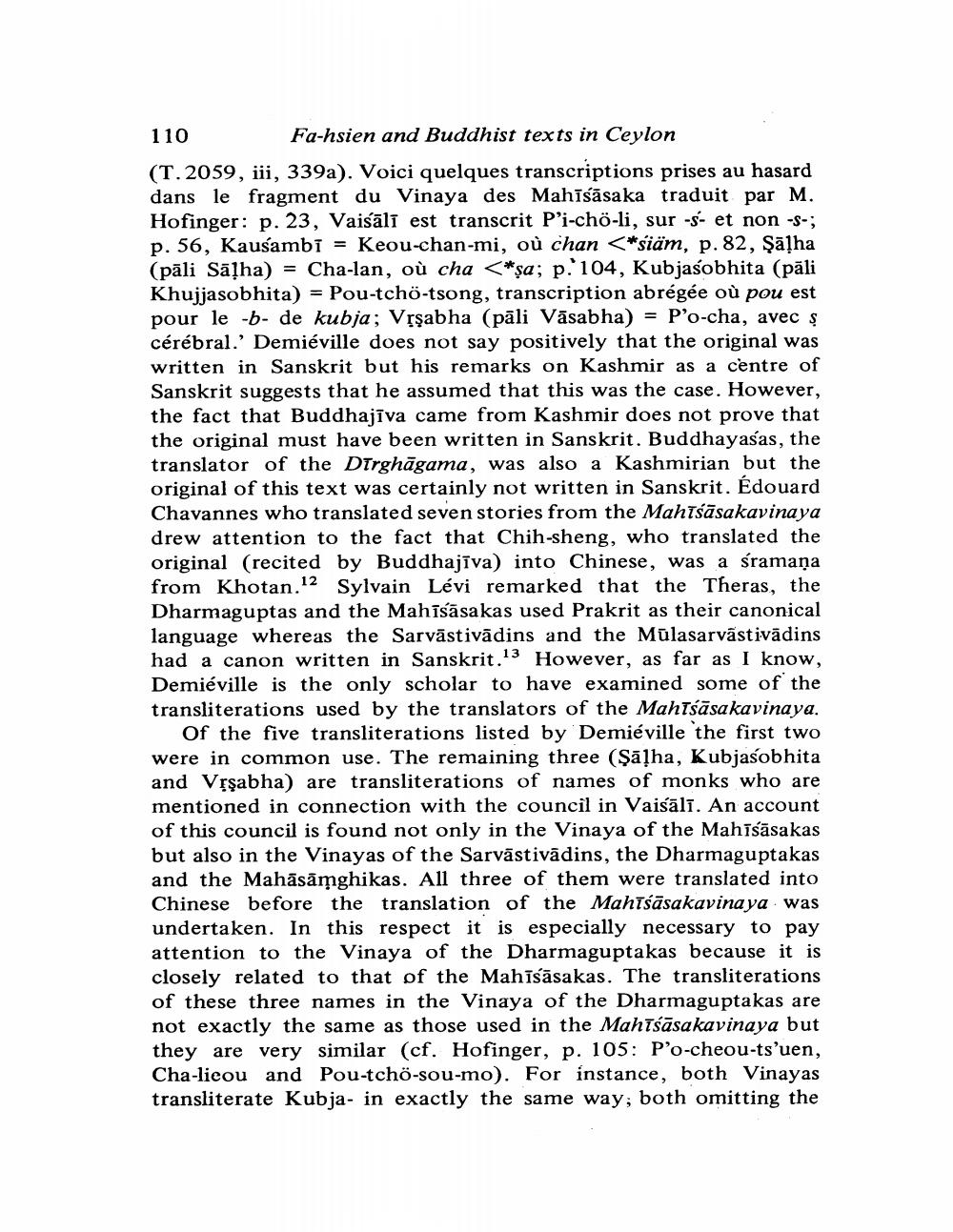________________ 110 Fa-hsien and Buddhist texts in Ceylon (T.2059, iii, 339a). Voici quelques transcriptions prises au hasard dans le fragment du Vinaya des Mahisasaka traduit par M. Hofinger: p. 23, Vaisali est transcrit P'i-cho-li, sur -s- et non -S-; p. 56, Kausambi = Keou-chan-mi, ou chan <*siam, p. 82, Salha (pali Salha) = Cha-lan, ou cha <*sa; p. 104, Kubjasobhita (pali Khujjasobhita) = Pou-tcho-tsong, transcription abregee ou pou est pour le -b- de kubja; Vrsabha (pali Vasabha) = P'o-cha, avec s cerebral.' Demieville does not say positively that the original was written in Sanskrit but his remarks on Kashmir as a centre of Sanskrit suggests that he assumed that this was the case. However, the fact that Buddhajiva came from Kashmir does not prove that the original must have been written in Sanskrit. Buddhayasas, the translator of the Dirghagama, was also a Kashmirian but the original of this text was certainly not written in Sanskrit. Edouard Chavannes who translated seven stories from the Mahisasakavinaya drew attention to the fact that Chih-sheng, who translated the original (recited by Buddhajiva) into Chinese, was a sramana from Khotan.12 Sylvain Levi remarked that the Theras, the Dharmaguptas and the Mahisasakas used Prakrit as their canonical language whereas the Sarvastivadins and the Mulasarvastivadins had a canon written in Sanskrit.13 However, as far as I know, Demieville is the only scholar to have examined some of the transliterations used by the translators of the Mahasasakavinaya. Of the five transliterations listed by Demieville the first two were in common use. The remaining three (Salha, Kubjasobhita and Visabha) are transliterations of names of monks who are mentioned in connection with the council in Vaisali. An account of this council is found not only in the Vinaya of the Mahisasakas but also in the Vinayas of the Sarvastivadins, the Dharmaguptakas and the Mahasamghikas. All three of them were translated into Chinese before the translation of the Mahibasakavina ya was undertaken. In this respect it is especially necessary to pay attention to the Vinaya of the Dharmaguptakas because it is closely related to that of the Mahisasakas. The transliterations of these three names in the Vinaya of the Dharmaguptakas are not exactly the same as those used in the Mahisasakavinaya but they are very similar (cf. Hofinger, p. 105: P'o-cheou-ts'uen, Cha-lieou and Pou-tcho-sou-mo). For instance, both Vinayas transliterate Kubja- in exactly the same way; both omitting the




